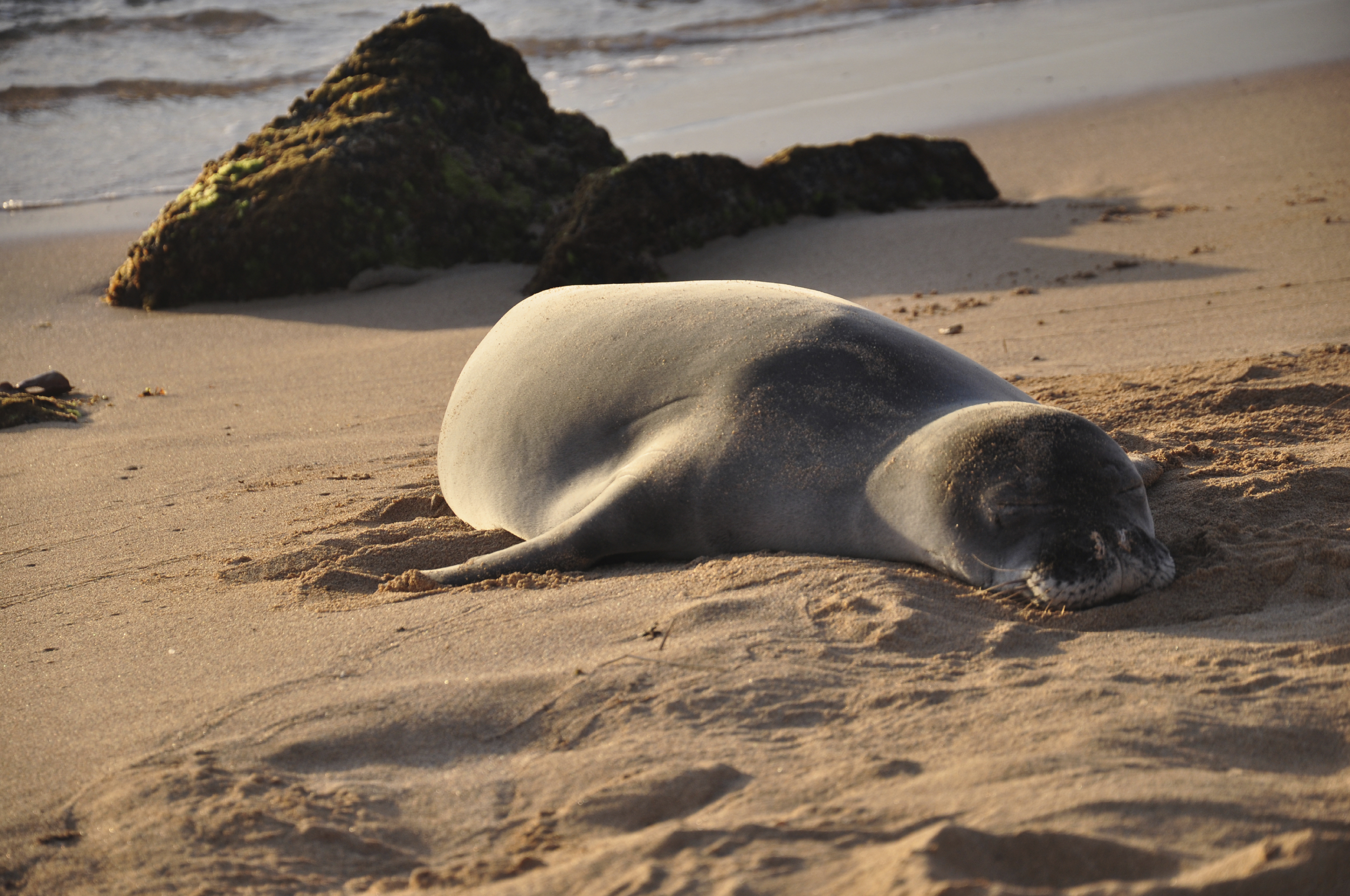Guest post by Christina Albright-Mundy.
This seal, touted as a living fossil due to its close physical relation to seal fossils dating from over 14 million years ago, tops all of the lists for endangered species, including the U.S. Endangered Species Act, the U.S. Marine Mammal Protection Act and CITES Appendix 1.
Threats from fishermen are one of the major dangers facing the seal, which is notorious for becoming entangled in discarded fishing gear. Fish hooks have been found embedded in Hawaiian monk seals, and two seals reportedly drowned in gillnets in 2009.
The deleterious impact of fishing can also be felt within the Hawaiian monk seals’ juvenile population. Starvation is one of the causes of population decreases, and overfishing may be partly to blame. Actions have been taken to try and revive the seal population, such as stricter fishing mandates to avoid bycatch, debris removal from the water to prevent entanglement, and reducing human activities that would negatively impact these animals. Sadly, this effort comes too late.

NOAA has estimated the decline of Hawaiian monk seals to be at a rate of 4 percent per year, and has expressed doubt that this species will be able to make a recovery, even in the “medium-term.” Such an ancient animal forced to the brink of extinction by mainly human activities should cause us all to stop and reflect, divers and non-divers alike. Support and promote conservation, both when you dive and in your daily life, so that the fate of the monk seal doesn’t befall yet another unrecoverable species.

